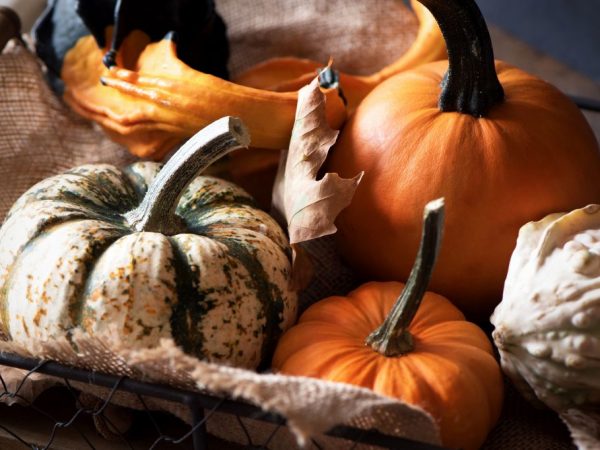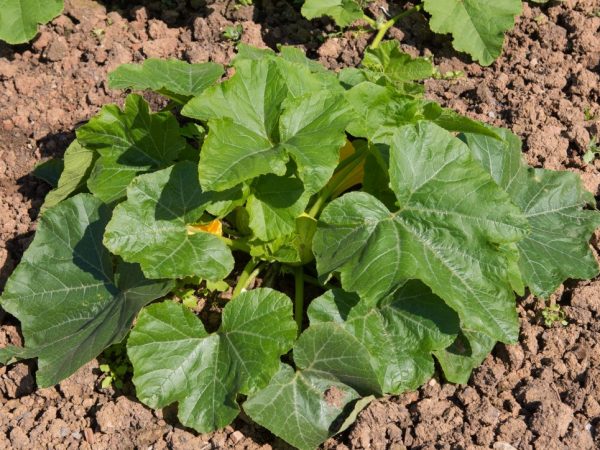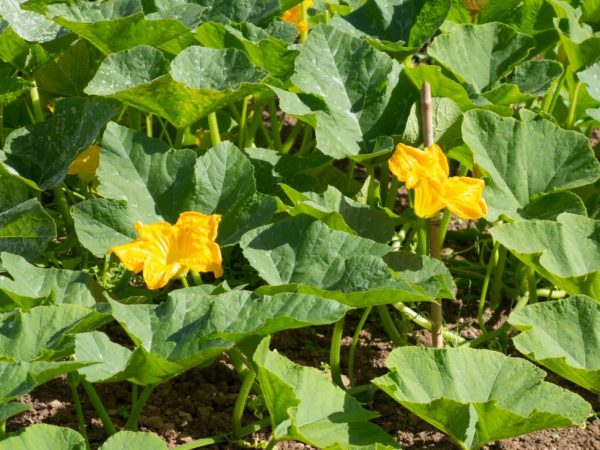Growing a decorative pumpkin
The decorative pumpkin differs from the usual in its bizarre shape (maybe even in the form of a pear, crown or acorn), and also has an unusual color: it can be orange, pinkish, gray, striped, yellow, green, blue or dark green (almost black) ... With its outstanding external data, it is considered inedible, therefore, it is used only as a decoration.

Growing a decorative pumpkin
Product use
Ornamental pumpkins are grown for design and crafts. Their use is mainly involved in interior design: beautiful boxes, dishes and even children's crafts are made from them.
They cannot be eaten - they are considered inedible. Breeders tried to create unusual varieties that would attract attention with their appearance, not taste.
Fruits that have not reached ripeness may well be suitable for consumption. This is due to the fact that their rind is not so dense and it is easier to cut it. But keep in mind that regular varieties have a richer taste.
Popular varieties
Usually, seeds are sorted not by name, but by shape or shade - this will make the site seem more attractive. But you can also find a mixture of varieties that differ in appearance.
Popular decorative pumpkin seeds:
- Star-shaped. This variety has similarities with squash, starfish and even a crown. The diameter of the pumpkin does not exceed 20 cm. The shape of the fruit is oblong and flattened. Peel shades can be different: white, orange, yellow, green or multi-colored. The most popular varieties of this type are Crown.
- Warty. On the fruits of this class, there are small bumps that resemble a wart, which is why such a name appeared. The peel can be in any shade. The most common type is the Surprise variety.
- Chalmoid. A striking representative is the Scheherazade variety. The upper part of the fruit differs from the lower one in shape and color, therefore it is also popularly called a mushroom. The bushes of this decorative pumpkin are curly and large.
- Pear-shaped. It is very easy to distinguish this species. The fruit is pear-shaped and has a double hue. The transition from one color to another is pronounced. This is clearly seen if you look closely at the Bicolor variety. A popular variety is the Eggball.
- Mandarin. Fruits can reach 400 g, they are of a bright orange hue, flattened in shape. A popular variety is Orange.
- Texas. It is characterized by long stems and ovoid fruits.
Landing features
Cultivation of decorative pumpkin is possible in all regions of the country.
It will turn out to grow a culture after cucumbers, tomatoes, squash, cabbage or carrots.
Seat selection

Ornamental pumpkin varieties grow on any soil
It is preferable to plant from the southern part of the garden, where the land is illuminated by the sun for about 8 hours a day.
Planting of decorative pumpkin is allowed on all types of soil.The maximum yield is obtained on light soil, which includes humus.
Also, the soil should be low acidity (maximum 6%). Before planting, add 3 kg of compost per m².
Some gardeners prefer to plant them in areas with a large accumulation of weeds. Thanks to its powerful roots, this culture will keep them from growing.
Groundwater should not be close to the soil surface. For the proper development of the plant, you need to take care of the installation of drainage. It will not allow moisture to linger in the ground, the roots will not rot.
Seed selection
To choose high-quality planting material that will give friendly shoots. It should be placed in water for a few minutes. Surfaced - unsuitable for planting.
Try to shop only in specialized stores.
The seeds need to be processed and disinfected. First, they are wrapped in cloth or gauze and placed for 3 hours in a manganese solution (0.5 tablespoons per 2 liters of water). After that, it is left for 10 minutes under running water and dried on a battery.
In order for the plants to be resistant to unfavorable weather (frost, temperature changes), the seeds need to be hardened. To do this, the first day they are kept at room temperature, after that they are taken out to the balcony for another day, and on the 3rd day they are placed on the battery.
For quick germination, the planting material is left for 2 days in warm water. During this time, the first seedlings will appear and it will already be possible to start planting.
Landing technology
In autumn, the soil is dug up and humus is introduced (10 kg / m².). After that, you need to level the area with a rake and leave in this position until spring. In March, dig up the soil again, adding compost (5 kg / m²) to it.
Seeds are planted in open ground in early May, when the soil warms up to a temperature of 10 ° C. In April, you should mark the rows and create holes (at least 30 cm in diameter).
Further steps:
- pour 300 g of bird droppings into the hole and fill with water;
- when the water is absorbed, place 3 seeds in the hole (the distance between them should be 3 cm) - this is done so that the seedlings are uniform: there is always a risk that some seed will not sprout;
- sprinkle the hole with soil and tamp it tightly;
- using a hoe, make a circular hole around (for watering).
Caring for decorative pumpkin
Any varieties of ornamental pumpkins in the process of growing require full care.
Provide watering, fertilizing and loosening the soil. In some cases, pollination will also be required. Usually this procedure is carried out if the weather is cloudy and insects cannot pollinate the plant.
Watering principle

The number of waterings depends on the growth phase
The regularity and quality of watering affects the development of ovaries and fruits - this is the main component of care.
- During flowering and formation of ovaries, irrigate at intervals of 3 days, using only warm water.
- When the fruits are already set, you need to increase the watering interval to 5 days.
At least 6 liters of warm water is poured under each plant.
After irrigation, you need to loosen the soil (to a depth of 7 cm) and remove weeds. This is necessary so that the roots remain unloaded and there is room for the growth of the bush.
Top dressing
As soon as leaves appear on the plant, dry nitrophosphate (100 g per bush) should be applied under each bush.
When the ovaries begin to form, you need to feed the culture with a solution of nitrophoska. To do this, 300 g of the drug is diluted in 10 liters of water. 5 liters of solution are poured under each bush.
Pollination
In cloudy or rainy weather, insects do not fly. This negatively affects the pollination of plants. As a result, the grower loses most of the future harvest.
To prevent such a situation, you need to pollinate the plants yourself. In the evening, you need to pick the male flower and lean it against the female inflorescence. This is how pollination takes place.
Harvesting
Ripe vegetables can only be harvested after the peel acquires firmness (it grows until about September), and the stalk becomes completely dry.
Select fruits that have not been damaged by frost.
The harvested crop should be stored in a dark and cool room, protected from direct sunlight.
Try to lay out the fruits so that they do not touch each other. The optimal distance is 5-7 cm.
Check your produce regularly for rot or mold (it is best to get rid of these vegetables right away).
To determine if the pumpkin is dry, you need to shake the fruit. As soon as the dry seeds knock on the inside, the product is ready to be used for decorative purposes. It usually takes about 6-8 months to dry completely.
Under the right conditions, the vegetable can be stored for a year.
Conclusion
The cultivation of ornamental pumpkin crops is very popular, despite the fact that they are inedible.
This is justified by the fact that such beautiful fruits can add a little zest to the garden plot.
Pear-shaped, star-shaped, turban-shaped and other varieties can be planted in any part of the country, and it is not difficult to grow them.
Once ripe, colorful vegetables can be used to create caskets, plates, or simply place them in your home for a fabulous atmosphere.

